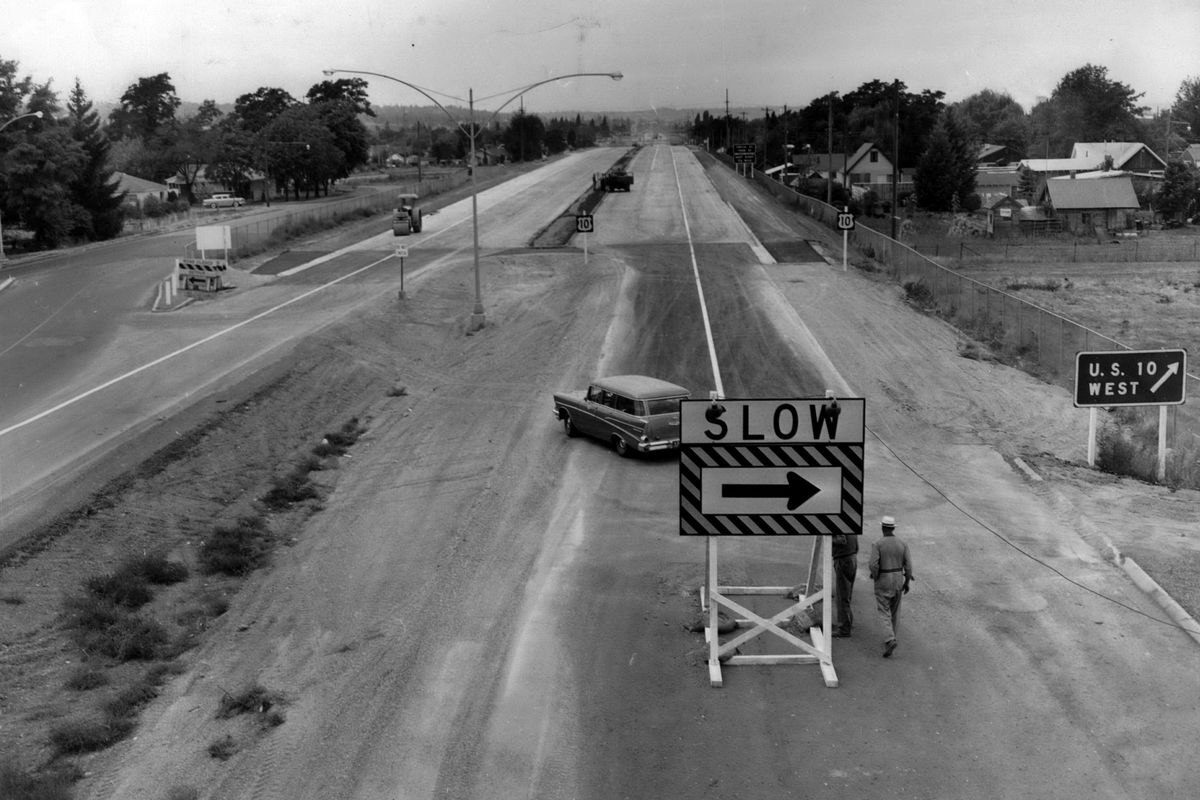Then and Now: Interstate 90 connections

During the 20 years it took to build and complete Interstate 90 through Spokane to the Idaho border, progress was sometimes slow, fraught with challenging excavation project and elevated bridges. Once complete, traffic volume grew rapidly.
Spokesman-Review writer Nicholas Deshais summed up the highway’s history in 2018: “When construction began on I-90 in 1956 as part of the Eisenhower-era interstate highway system, it was designed to carry 50,000 vehicles on the average day. It reached that in 1978, just four years after the Spokane freeway was officially completed in 1974. Though nothing has changed in its design, today I-90 carries on average more than 120,000 vehicles every day in Spokane.”
After the 11-mile Spokane Valley freeway was completed in 1956, there was still a gap between that modern multilane limited-access “super highway” and downtown Spokane. The east-west route through the city was named Highway 10, an early designation for the highway that roughly followed Sprague Avenue through the Valley from the Idaho border, then diverted into relatively slow traffic on Second and Third avenues downtown using diagonal ramps in East Spokane. David C. Gilbert, manager of the Inland Empire Automobile Association, told the Spokane Chamber of Commerce in 1951 that the downtown route was only temporary, predicting that there would be a freeway built “12-15 years hence.”
On Sept. 13, 1958, a 2-mile extension from Custer Road to Helena Street, which cost $1.65 million, opened to traffic and allowed high-speed travel from Liberty Lake into the Spokane city limits.
During that same year, Spokane was embroiled in a debate about the freeway’s future route through downtown. The eventual route would doom many structures, including the Spokane Trade School, the Inland Automobile Association building, the Keneseth Israel synagogue, the First Church of Christ Scientist, the Madren Brothers Studebaker-Packard sales office, the International Business Machine office and several others.
The final plan called for an elaborate cloverleaf interchange above Liberty Park and an elevated viaduct through the business district running between Fourth and Fifth avenues.
Because the route crosses the northern tier of the U.S., I-90 is the longest interstate highway in the country. It passes through 13 states for a total of 3,021 miles, including 297 miles across Washington.